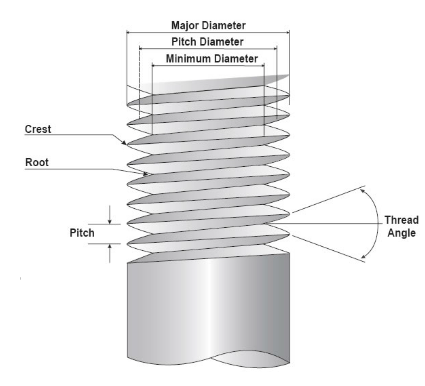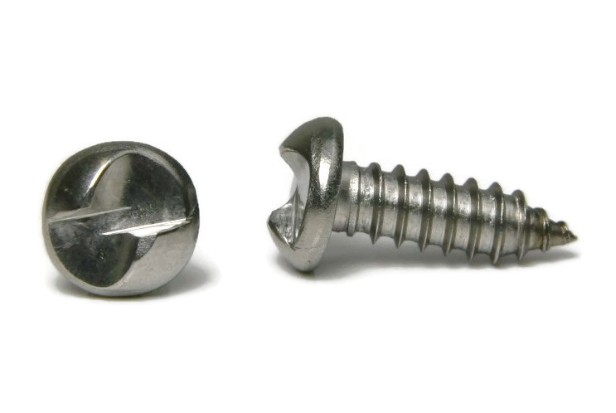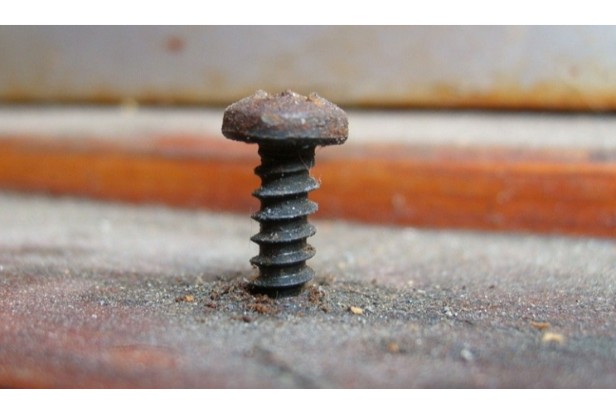
Screws are externally threaded fasteners made to fit into holes in assembled parts, mate with an internal thread that has already been formed, or create their own thread. The material that a screw is intended to be drilled into typically serves as a defining characteristic of the screw type, making it relatively simple to choose the right one for your application.
Screw type, however, is only one step in the procedure. Additionally, you must choose the proper screw size, which can be more difficult if you are unsure of which metrics to consider. Here are some pointers for measuring screw size to get you started.
Table of Contents
How to Measure Screws
Knowing the proper screw terminology and component parts is probably the most difficult aspect of measuring screws. Below, we’ll go over some of the crucial screw measurements and how to obtain them.

Screw Length
The simplest screw measurement to comprehend and keep in mind is length. The simplest way to measure screw length is to measure the distance from the flat part of the head to the tip or blunt end of the screw.
However, this measurement is a little more difficult due to the wide range of distinctive screw head types. While many screw heads have a flat bottom, some have other designs. Here’s an overview of some of the different screw head types and how to measure screw length with each of them:
- Screws that are flat on the bottom of the head (non-countersunk) – Length is measured from the flat bottom of the head to the tip or blunt end of the screw
- Screws that are flat on the top of the head (countersunk) – The length of a screw is measured from the tip or blunt end to the flat top of the head.
- Screws with oval heads – Because the screw head doesn’t have a flat side, these are the exception. In order to determine the length of oval head screws, the head’s widest point is measured along with the screw’s tip or blunt end.
Major Diameter Vs. Minor Diameter Vs. Pitch Diameter Vs. Nominal Diameter

That’s right, there are four different diameters, and each one is significant. Here’s the breakdown of what each means:
- Major diameter – This is the screw thread’s largest diameter. It is determined by measuring the distance between the thread’s crests on opposite sides of the fabric.
- Minor diameter – The thread of a screw has no smaller diameter than this. It is calculated by measuring the distance between the roots of the threads on opposite sides.
- Pitch diameter – The theoretical cylinder’s diameter that lies in the middle of the major and minor diameters is this one. Practically speaking, you probably wouldn’t measure the pitch diameter on a finished part; instead, you would use that knowledge to roll threads on a new one.
- Nominal diameter – This is shorthand for “nominal major diameter” — and, in most cases, “nominal” just means “basically.” Accordingly, the major diameter is estimated. For instance, many would rather round up and refer to a nominal diameter of M14 than a major diameter of M13.962.
There are only three crucial diameters, and a fourth abbreviation is simply used to make it simpler to refer to one of them. But if you comprehend them all, you’ll be able to measure the width of your screw accurately. This is a crucial step in making sure your component will fit in the machine or material you’re drilling it into.
Thread Pitch

The distance between a point on one thread and that same point on the following thread is known as the thread pitch. The crest, trough, or any other point in between can be used to gauge thread pitch.
A general rule to keep in mind is that larger pitches correspond to coarser threads and smaller pitches to finer threads when it comes to metric parts, which are measured in millimeters. When considering issues like screw strength and installation simplicity, it’s crucial to keep this in mind.
The number of threads per inch, or TPI, is the unit of measurement for thread pitch for inch parts. Simply count the number of threads along a screw’s 1-inch length. This means that screws with a lower TPI have coarser threads, while screws with a higher TPI have finer threads. Similar to the metric system, these are important factors to consider when determining the strength and ease of installation of a screw.
By grouping them under the Unified Screw Thread System, standard inch thread pitch measurements can be categorized. These are the two most common groupings:
- Unified National Coarse (UNC) – coarser pitches with deeper threads
- Unified National Fine (UNF) – less thread depth and larger tensile stress area
Measuring Screw Weight
It is frequently inaccurate to weigh one screw and use the weight of one screw as a representation of the batch as a whole due to minute variations in the structure, manufacturing process, and even chemical composition of most fasteners. It is more dependable to weigh several screws and then compute an average based on this value.
Conclusion: Determine the Right Screw Size for Your Application
Having now learned the fundamentals of measuring screws, Do you want to take it a step further and choose the ideal screw size for your situation? Here are a few places to begin.
A screw that can support the load you require it to without deforming must have a length and width that are compatible with the material it is being installed in. Therefore, you should consider thread pitch and how it may impact the performance of the screw and the application while using the length and width measurements specified above (length, various diameters).
FAQs
What Does Screw Size 8 Mean?
The #8 gauge screw has a major diameter of 0.17″ and 8 TPI. The screw is 1-1/4″ long, a measurement taken from the bottom of the head to the point.
Does the length of the screw head count?
Does Screw Length Include Head?
The nominal length of a screw is usually, though not always, measured from below the head to the tip of the screw. The screw would be measured from end to end if there was no head, as would be the case with grub screws or threaded bars.
What is the Rule of Thumb for Screw Length?
The selection of screws must take length into account. The general rule of thumb is that the screw should enter at least half the thickness of the bottom material, e.g. 3/4&The screw’s diameter, or gauge, is the other consideration; into a 2 x 4. Screws are available in gauges 2 through 16.
What is the Screw Formula?
The mechanical advantage of a screw is the ratio of the circumference of the screw head to the distance traveled by the thread after each revolution (pitch). In other words, IMA = 2*pi*L / P, where P is the distance between screw threads (also known as pitch), and L is the radius of the screw head surface.


